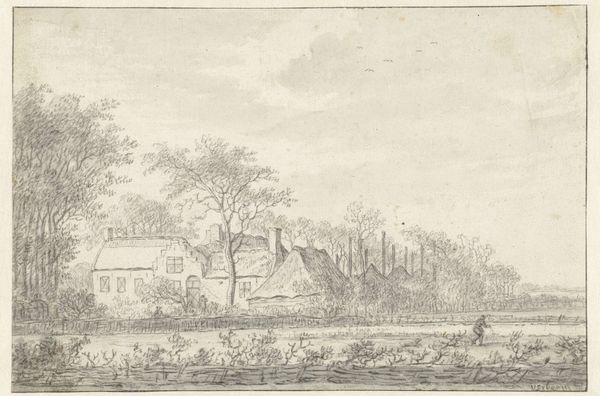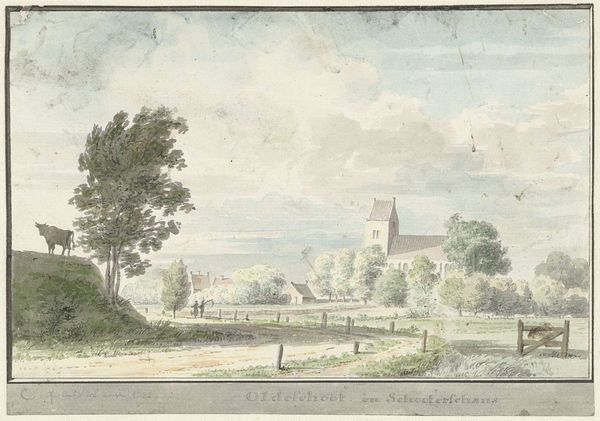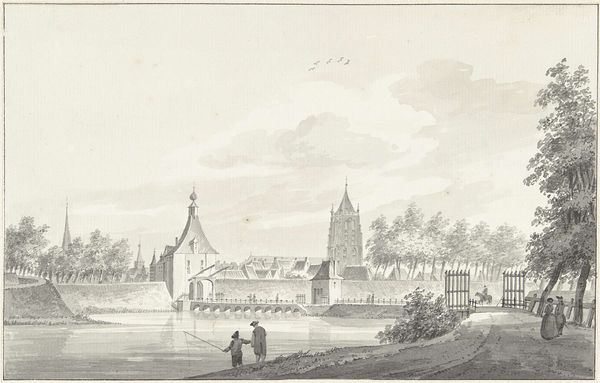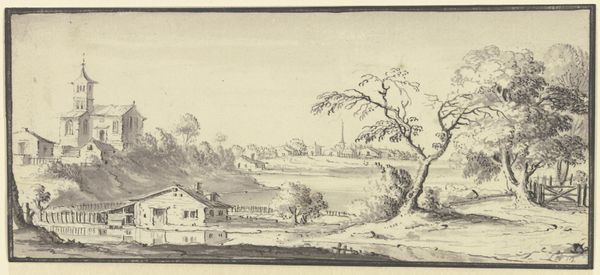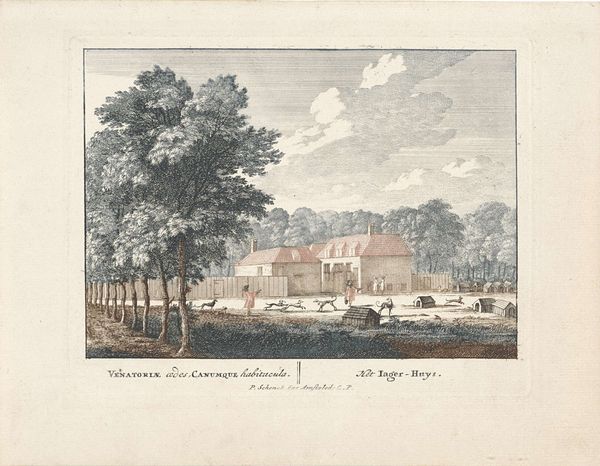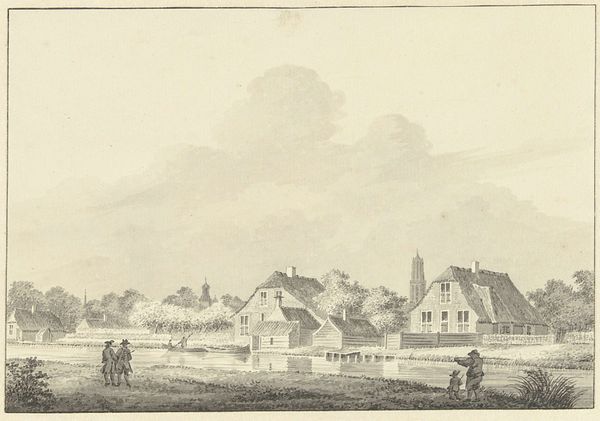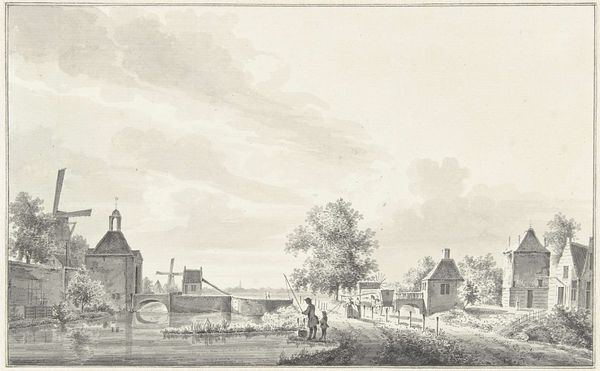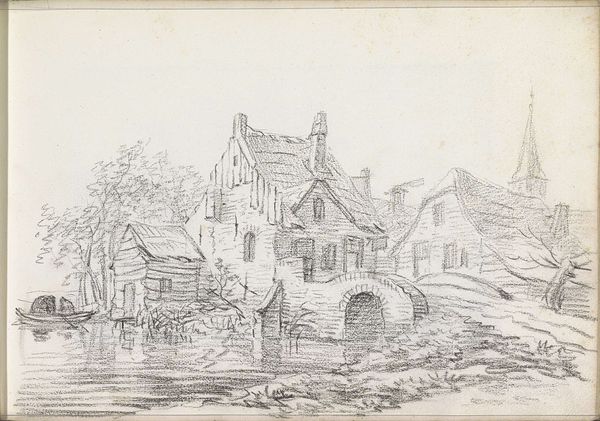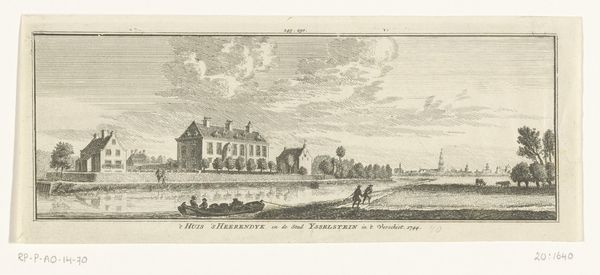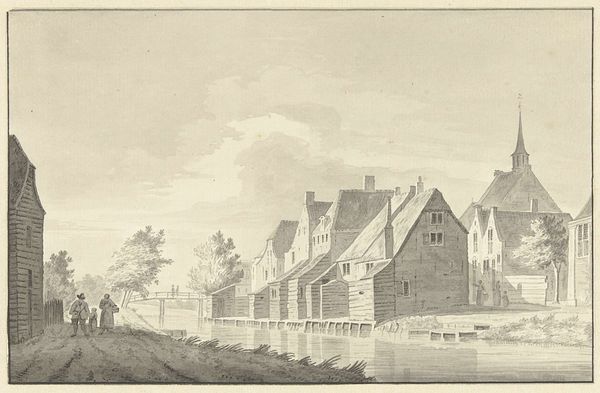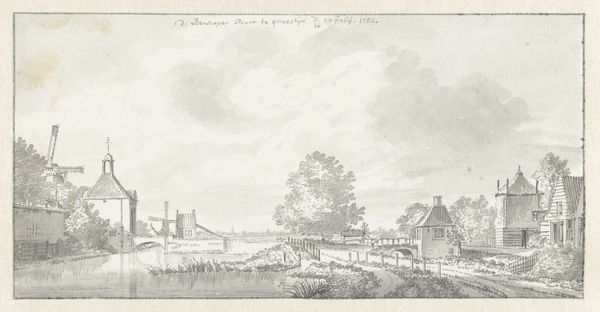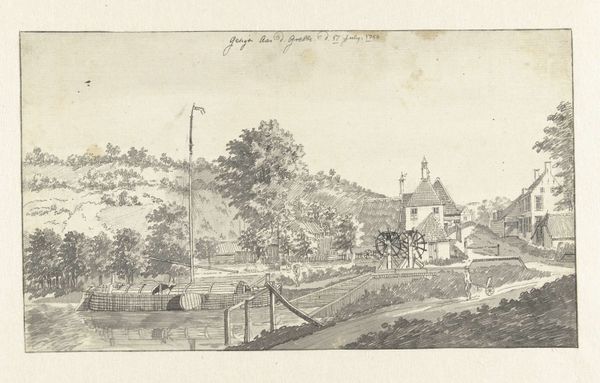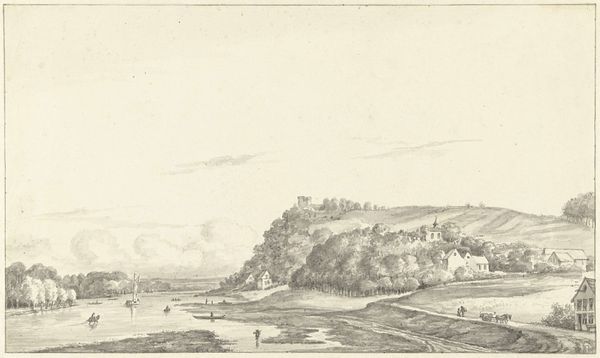
Copyright: Public Domain: Artvee
Editor: This is "Herlufsholm kirke ved Susåen" by Jens Juel, likely created between 1745 and 1802, a watercolor drawing of a church near a river. The tones are muted, almost faded, giving it a dreamlike quality. What jumps out at you when you look at this piece? Curator: What immediately grabs me is the process, how the watercolor interacts with the paper, and what that implies about the artist's practice and the cultural value placed on landscape at that moment. Notice the seemingly effortless rendering; it speaks volumes about the training and the materials readily available for such studies. What paper was used? Where did the pigments originate? These choices were linked to social standing and economic realities. Editor: So, even the materials themselves are communicating something about the culture? Curator: Absolutely! The rise of landscape as a legitimate subject coincided with industrial advancements allowing for mass production and wider distribution of paper and pigments. Consider the relationship between artistic output and the commercial possibilities this created. Were these studies intended for sale, reproduction, or private contemplation? The answer lies in further understanding the societal impact of the Industrial Revolution in Denmark during the period. Editor: That's fascinating. I hadn't considered the socio-economic aspect impacting even a simple watercolor like this. It's so much more than just a pretty picture. Curator: Exactly. We can look past the traditional art historical narratives and dive into understanding art through the means of its production and distribution, seeing how art is really a tangible representation of human labor and resource management. Editor: It definitely opens up a new way of interpreting art! Thank you!
Comments
No comments
Be the first to comment and join the conversation on the ultimate creative platform.

